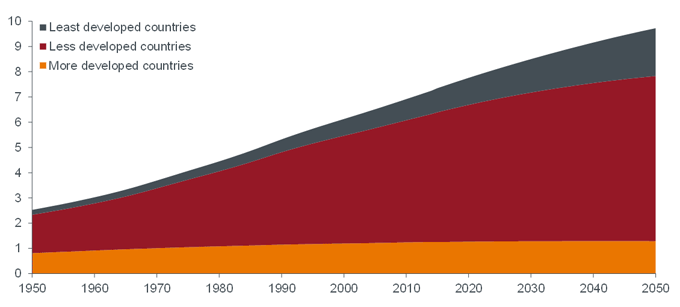
Henderson: Global Growth - dial out short-term ‘noise’
In this Q&A update Ronan Kelleher, who co-manages the Henderson Global Growth Strategy with Ian Warmerdam, discusses the importance of focusing on long-term growth trends rather than short-term economic or political events.
24.02.2017 | 14:35 Uhr
What makes your approach different from other global equity funds?
Our portfolio is truly managed with a long-term investment horizon. We think this differentiates us from the vast majority of other funds, and affords us opportunities that may only appear to the patient investor. Indeed, since we initiated the Henderson Global Growth Strategy almost seven years ago, around one in five holdings remain in the portfolio today. Central to the strategy’s strong performance track record over this period has been the team’s sole focus on uncovering companies where growth is being driven by secular (long term) rather than cyclical trends. In this way, we are able to look through shorter-term macroeconomic or geopolitical events, in the belief that our investments should compound over time regardless of the wider economic backdrop.
What is your broad outlook for global equities in 2017?
Frankly, our ability to forecast the direction of equity markets over time periods as short as one year would be no better than our chances of correctly calling the toss of a coin. Instead, we believe there are much more predictable trends to be studied in the quieter domain of the long-term investor, such as the rising penetration of e-commerce (see chart below), or the implications for health care services of an aging global population.
E-commerce sales growth set to continue

Source: Retail Indicators Branch, US Census Bureau, Citi Reserach estimates, as at 17 November 2016. E-commerce sales = online sales.
Some of the longer-term secular trends of particular interest to us include Internet Disruption, Healthcare Innovation, Energy Efficiency, Paperless Payment and Emerging Market Growth.
These trends may seem obvious, and predicting the growth of the internet is unlikely to win you a Nobel Prize in Economics, however, sometimes the truth is right in front of us. These mundane long-term trends can compound significantly over time.
Are markets experiencing a rotation from growth to value?
Our process is entirely focused on ‘bottom-up’, fundamental analysis. Calling ‘top-down’ market rotations is not something we would be best placed to do. In our view the best way to mitigate market risk is to stick to our strict valuation discipline, meaning we can avoid overpaying for growth, and construct the strategy from a diversified selection of high-quality companies.
How do you attempt to preserve as well as grow capital?
We view risk and opportunity in absolute terms and see the risk of losing money as more relevant than relative underperformance of a benchmark. We seek to invest in high-quality businesses on attractive valuations and favour companies that have successfully weathered tough market conditions in the past. Only companies that we would be comfortable holding for at least five years make it through our investment process, hence capital preservation is at the core of our philosophy.
How do you identify areas of the market for potential stock ideas?
When one is making investment decisions based upon a truly long-term horizon, many parts of the market become unattractive, as the potential for competitive differentiation does not hold. This guides us in our idea generation and deciding which types of companies we spend our time travelling to meet. Many of our ideas also stem from our work studying the aforementioned longer-term structural growth trends.
Does your strategy currently have an allocation to emerging markets?
Yes, approximately 12% of the portfolio* is currently allocated to emerging markets. We see ourselves as global investors, unconstrained by geographic boundaries and believe the long-term opportunity being created by rising living standards in some parts of the developing world is a very powerful one. To put it into perspective, population growth will almost entirely come from the least and less developed countries in the years ahead (see chart below) and half of the world’s workers are expected to live in Asia and Africa by 2050. We benefit in this regard by working closely with Henderson’s Global Emerging Market Equities Team, also based in our Edinburgh office, with whom we share a long-term investment time horizon and overlapping investment universe.
*Source: Henderson Global Investors as at 31 January 2017
Most population growth expected to come from less developed regions
Population (billions)

Source: United Nations, Department of Economic and Social Affairs, Population Division (2015), World Population Prospects: The 2015 Revision, Total Population, both sexes, using median fertility



Diesen Beitrag teilen: